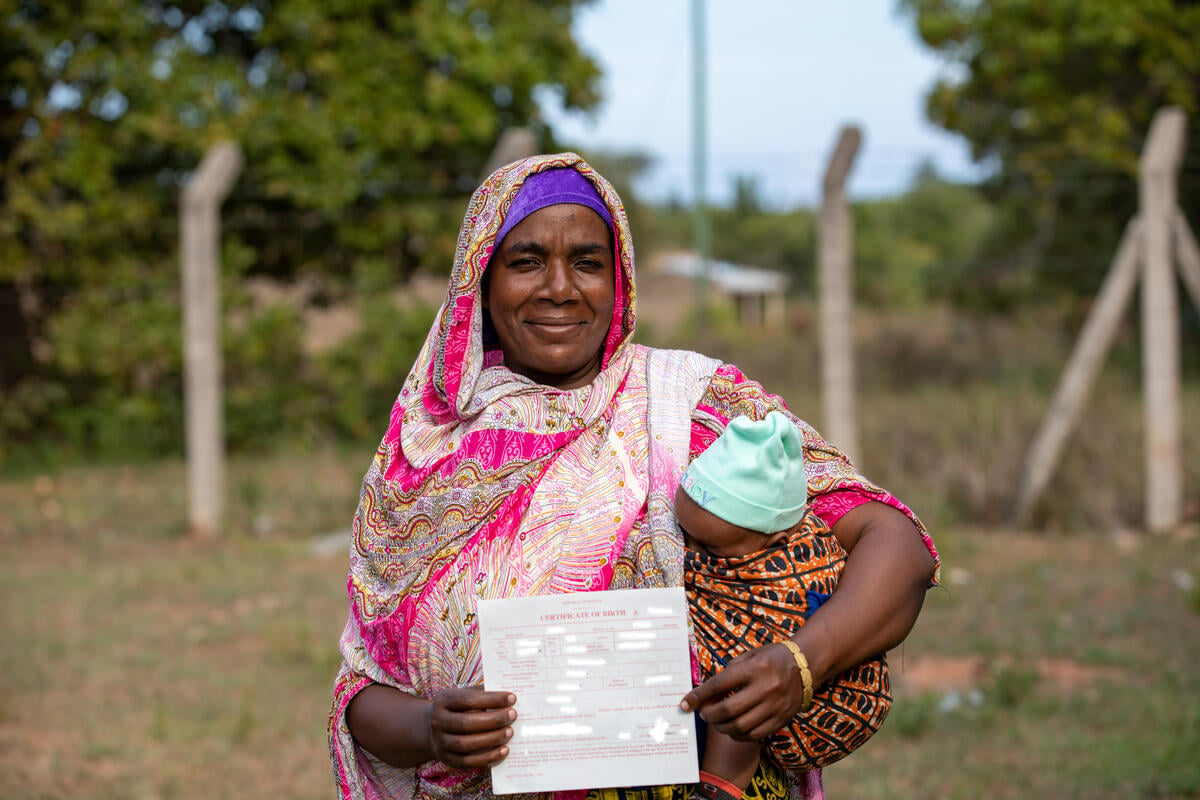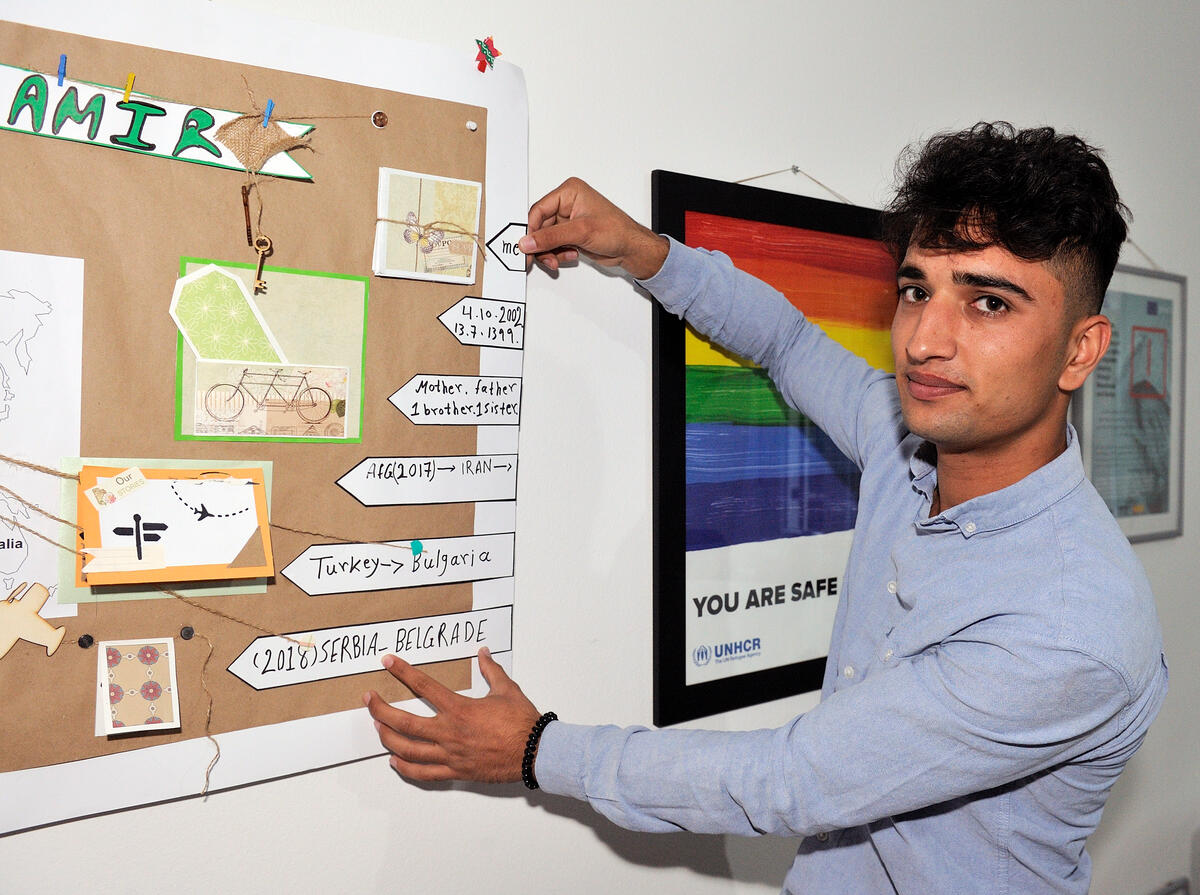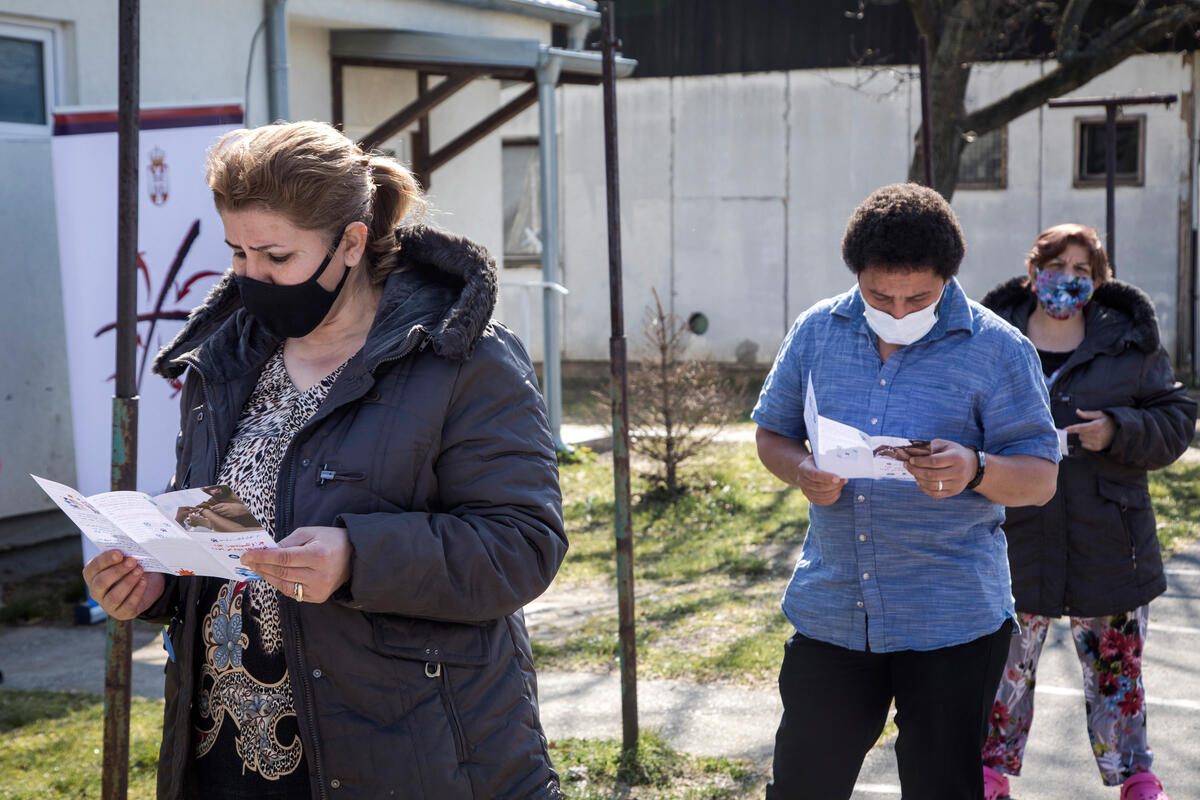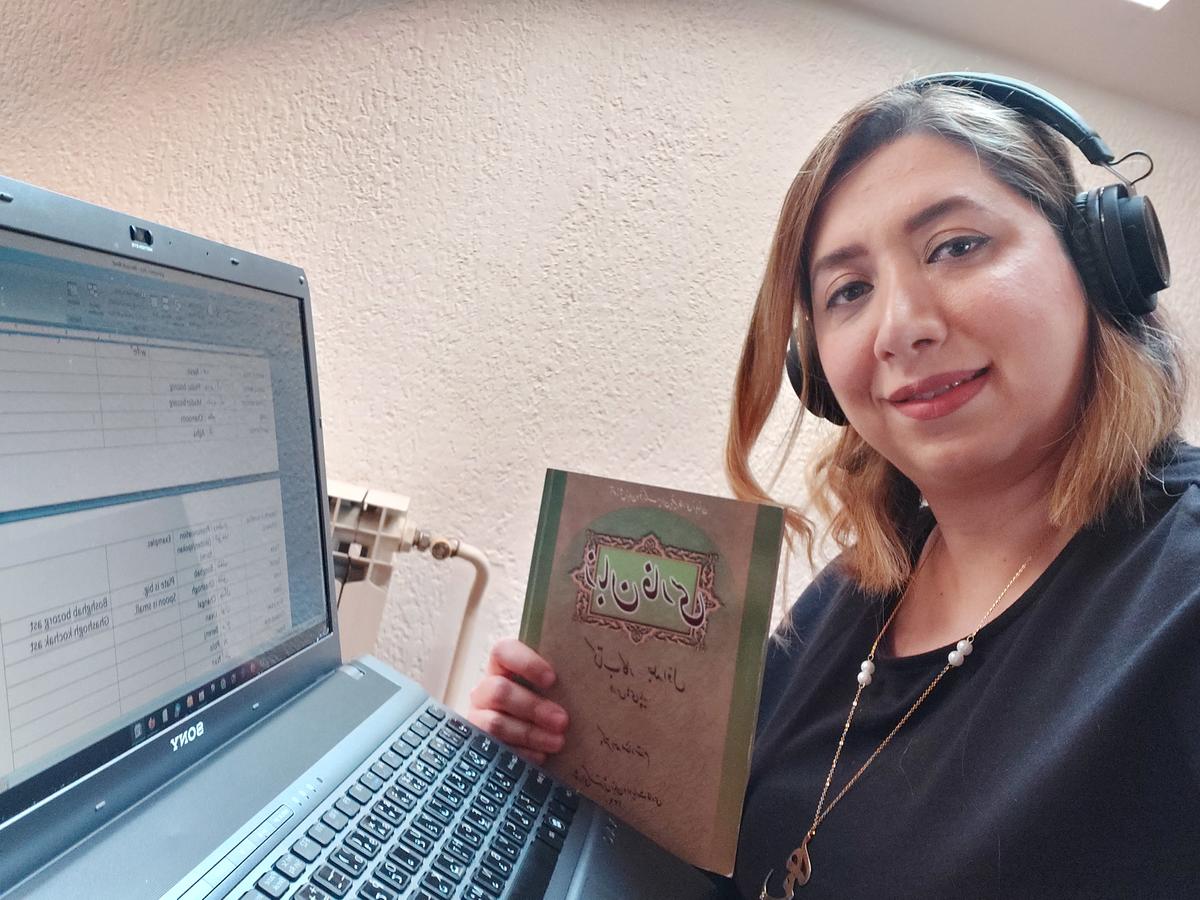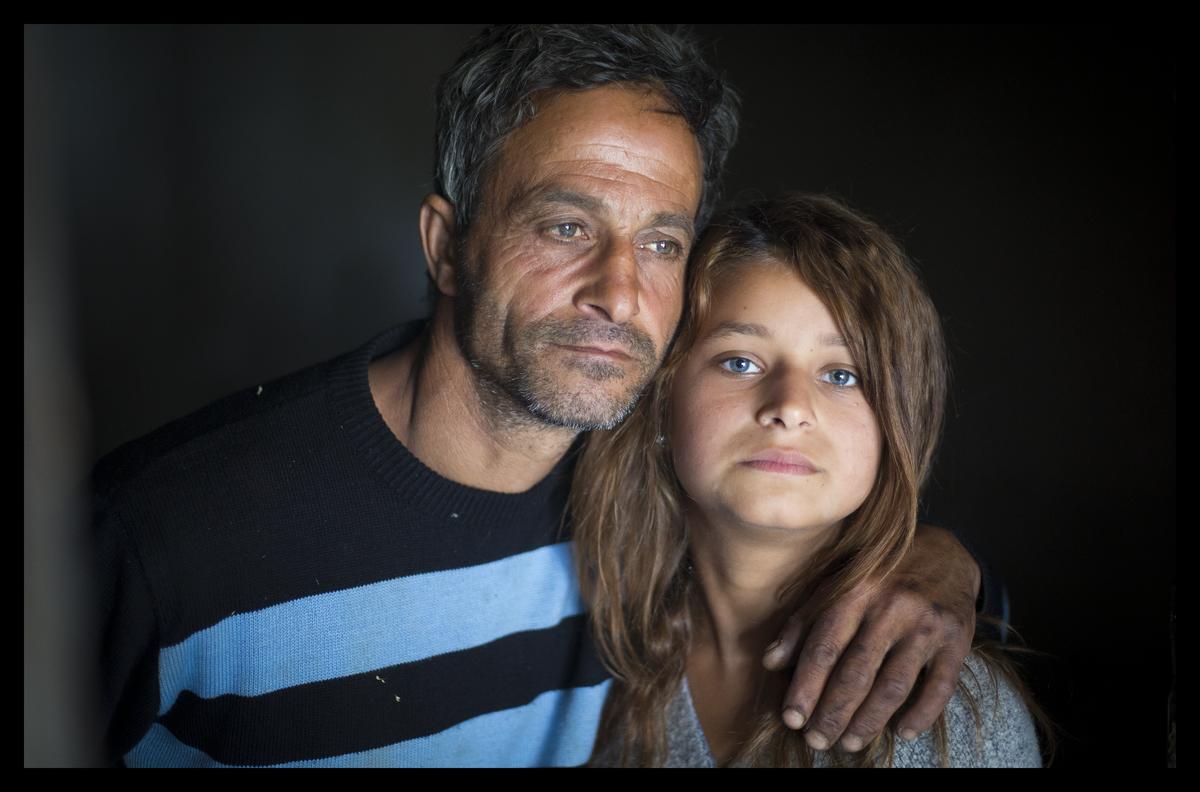Kosovo Crisis Update
Kosovo Crisis Update
Kosovo
UNHCR opened a supply pipeline between Skopje in the FYR of Macedonia and Kosovo's western town of Pec on Tuesday, delivering urgently needed tents in the heavily devastated region.
Shelter is one of the main preoccupations in the region as displaced people and refugees return to find their villages destroyed and instead proceed to urban centres, including Pristina.
Last week, UNHCR opened a satellite office in Pec, home to 68,000 people before the war. An aerial survey on Thursday found up to 50 percent of the houses in the area have been devastated and made uninhabitable. However, IDPs and refugees have been returning to the area despite security problems. Around midnight Monday, a boy was killed in a land mine accident. An increase in drive-by shootings has also been reported there.
Nine days after UNHCR resumed operations in Kosovo, which were disrupted by the two and a half month air war, convoys and mobile teams continued to fan out.
On Tuesday, UNHCR dispatched the first convoy to Podujevo, on the strategic road between the capital, Pristina, and Belgrade. Yugoslav troops left Podujevo over the weekend, completing their withdrawal from Kosovo and allowing aid delivery to an area where fighting had been going on since December between government forces and the Kosovo Liberation Army. Two trucks carried blankets, jerry cans, tents, plastic sheeting and hygienic kits.
From Prizren, where UNHCR opened a satellite office last week, teams went out to look at conditions in three areas in the Suva Reka region and reported severe damage in many villages.
In the village of Studencane, for example, only 20 of 500 houses there were intact, according to villagers. Despite this, refugees and villagers have been going back there. In one section of the village, which had been damaged in earlier fighting last year, there were around 500 returnees trying to rebuild their homes. The electric power transformer there has been blown down by Serbs and wells were stuffed with rotting animals.
There was little commercial activity in Suva Reka, although there was electricity and water. The clinic was functioning in a building with little damage. Aid agencies are sending supplies to the clinic. Residents said four children were wounded in a land mine incident in the nearby village of Dula last week.
Another team reported that at the Bogoslavija Monastery in Prizren, KFOR troops - the international security force in Kosovo - were protecting 50 people, mainly elderly. They include Kosovo and Krajina Serbs, Kosovo Albanians suspected of being collaborators and various other ethnic minorities. Some have visible physical injuries after apparently being attacked by Albanians. NGO groups are providing them assistance.
UNHCR also is helping reactivate the distribution network in the area of the Albanian charity Mother Theresa Society - a process that is going on in other areas as well.
Albania
Some 18,900 refugees returned from Albania to Kosovo on Monday, bringing to 109,400 the number of people who had gone back since last week.
Only a few hundred refugees remain in the camps in Kukes, which just a week ago were sheltering 35,000 refugees. Those still there were mostly the sick and the elderly. They were being regrouped at a collective centre and will be transported to Kosovo once arrangements are made.
Refugees heading home were now mainly coming from Durres, Elbasan and Tirana in central Albania. A few were from camps in Vlore and Fier in the south-west. Many were hiring buses and cars to take them back to Kosovo.
FYR of Macedonia
Large numbers of refugees continued to go back from the FYR of Macedonia to Kosovo. From midnight to 6 a.m. Tuesday, more than 2,600 Kosovars had left through the main border crossing at Blace.
On Monday, 18,000 Kosovars went back - 9,600 through Blace, 7,900 at Jazince and 400 at Tabanovce. So far, nearly 70,000 people have gone back from the FYR of Macedonia.
Some people who had gone to visit their villages in Kosovo and were returning to pick up their families were stopped at the border. UNHCR again raised this issue with the authorities to keep the border open and as flexible as possible for these people
Continuing deliveries from the FYR of Macedonia, UNHCR sent 16 trucks to Pristina on Monday, carrying 9,800 blankets; 2,650 mattresses; 3,780 hygienic parcels; 1,525 plastic sheeting; 3 x 3,000 litre water tanks and some office equipment.
Thirty trucks also arrived in Skopje with tents (22 trucks), blankets (1 truck) and mattresses (7 trucks). Many of these trucks that arrived in Skopje Monday will directly go up to Kosovo Tuesday without off-loading in Skopje. Five trucks will proceed to Pristina, 11 to Pec and 11 to Urosevac.
Also on Monday, UNHCR was informed by local Serbs in Kumanovo that there were 600 Kosovar Serbs held at a church three kilometres from the Tabanovce border. These people reportedly fled Urosevac area and arrived at Tabanovce border on Saturday night in nine buses.
They were denied passage at the Serbian side of the border and have been held by Serbian police. The local Serbs have been allowed to deliver food to these people. UNHCR is working to have access to them.
Meanwhile, FilmAid, an organization of concerned film professionals committed to helping refugee children, began showing movies in Macedonian camps. The project of UNHCR and the advocacy group USA for UNHCR is aimed at lifting the spirits of Kosovo's traumatized children.
Republic of Montenegro
Following discussions between UNHCR and Yugoslav authorities, some 800 displaced Kosovars returned home from Montenegro on Monday. These people had expressed apprehension at going back because of the presence of Yugoslav army checkpoints on the road to Kosovo.
Of the people who went back, two thirds said they would see conditions in the villages and then return. The rest said they were going home permanently. They were bound for Pristina and Kosovska Mitrovica in northern Kosovo.
UNHCR-IOM Humanitarian Evacuation Programme
On Monday, 87 refugees in the FYR of Macedonia left for France and 64 went to Australia under the humanitarian evacuation programme of UNHCR and the International Organization for Migration. So far, 88,305 refugees have left under the programme which is under review in the light of the peace agreement in Kosovo.
Asylum in Europe
UNHCR has published updated statistics of asylum applications in Europe by citizens of the Federal Republic of Yugoslavia through May 1999. The applicants were largely Kosovars but also include Serbs.
During May, there were 12,269 applications filed by Yugoslav asylum seekers in 22 European countries for which figures are currently available. This compared with 9,403 in April, or an increase of around 30 percent.
The total number of applications during the first five months of this year was nearly 48,000, compared with a 1998 total of 98,000.
Germany and Switzerland alone accounted for over 54 percent of all applications during 1999, with Germany receiving 27.2 percent and Switzerland, which is just one-tenth the size of Germany, receiving 26.8 percent.

